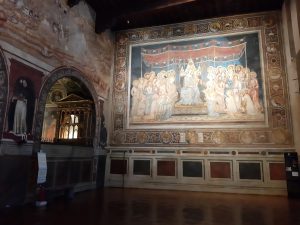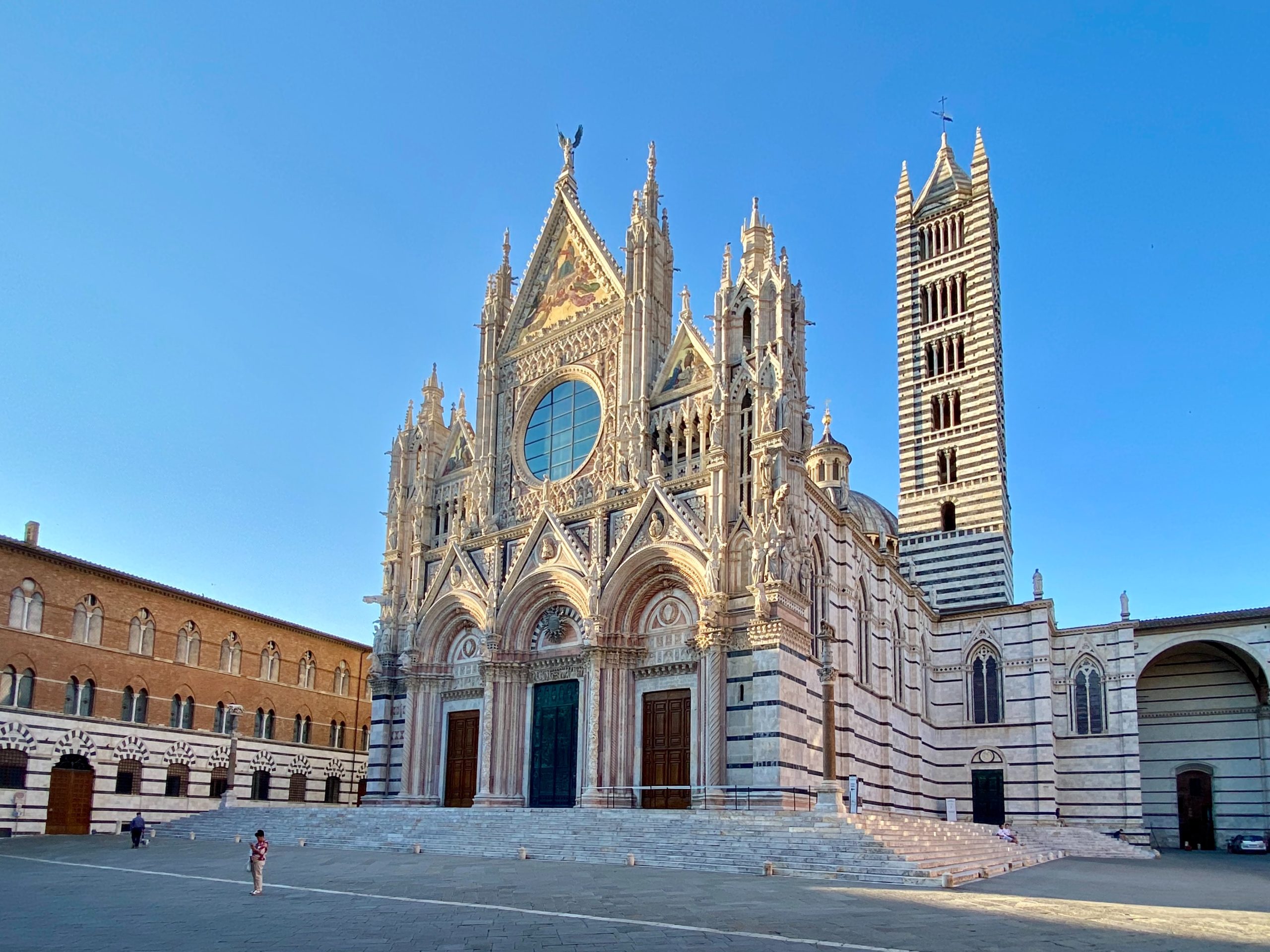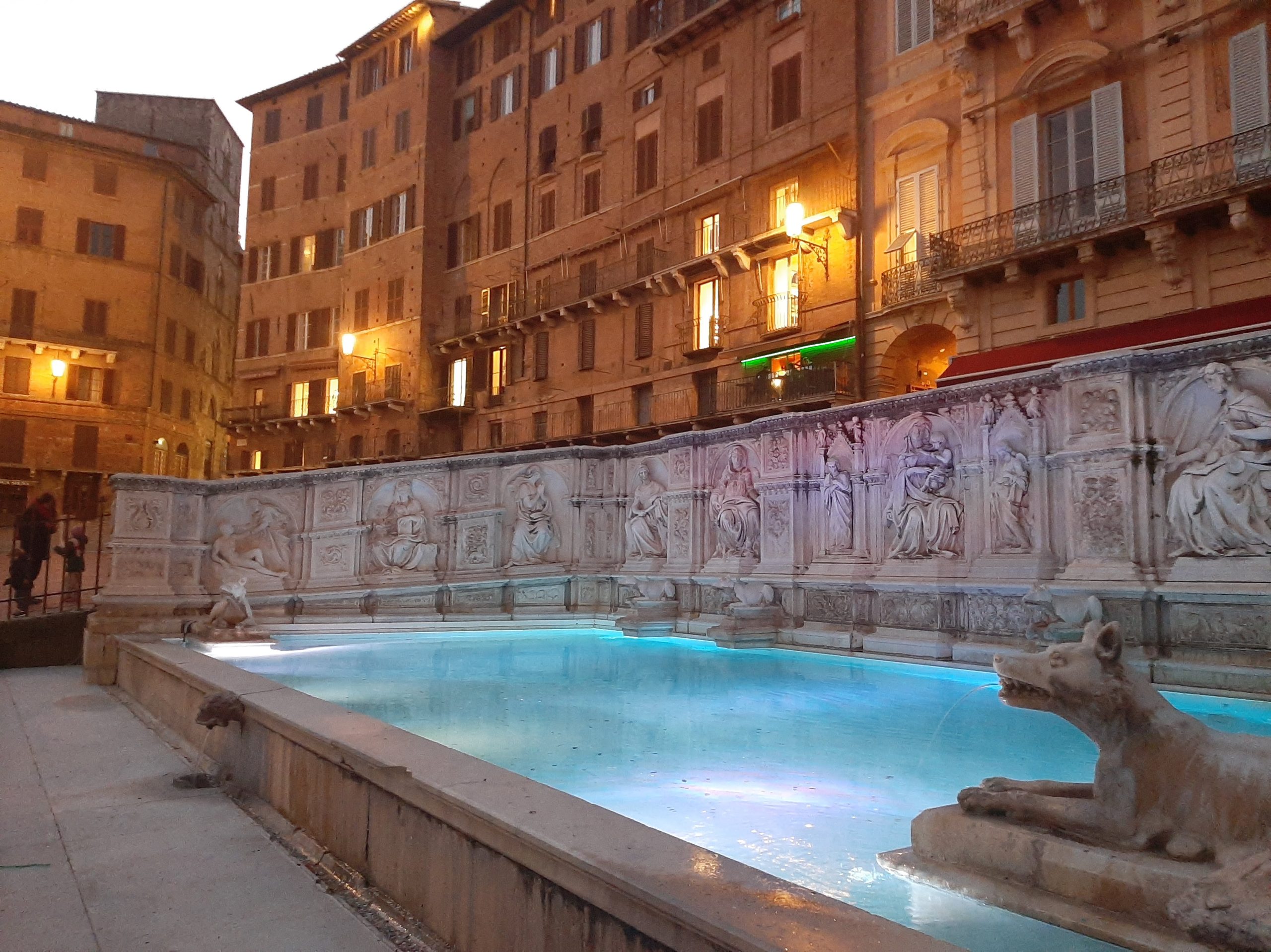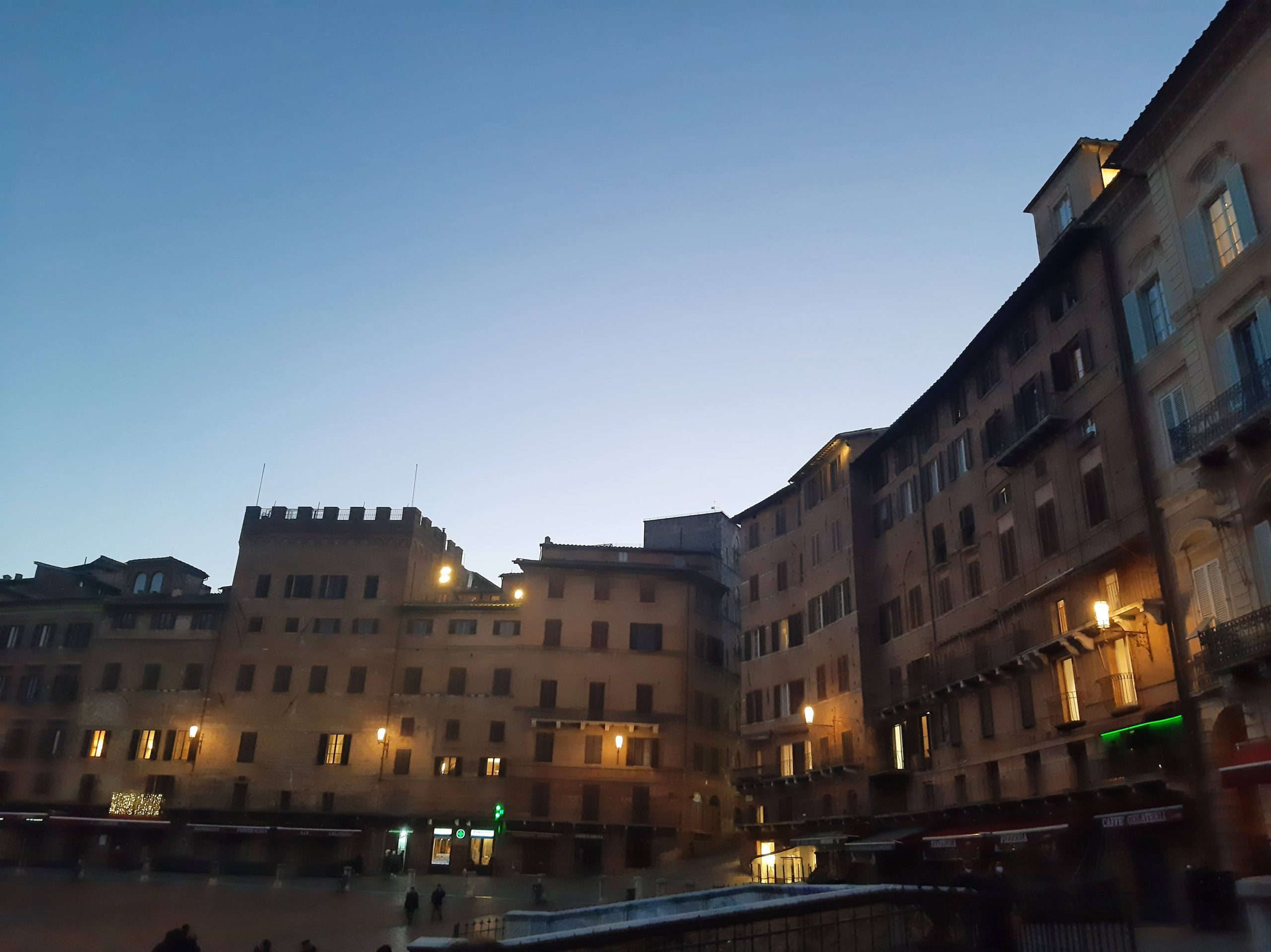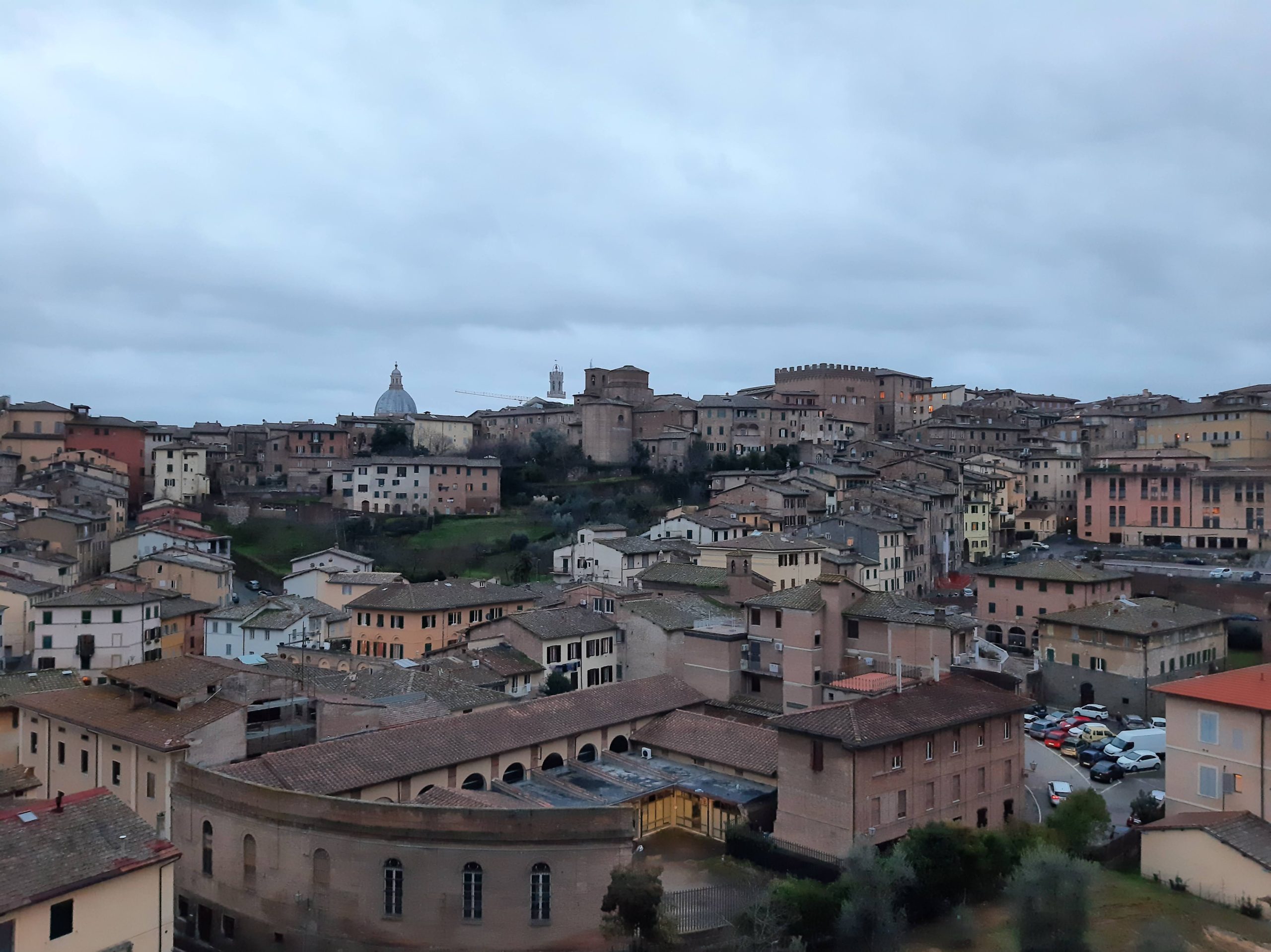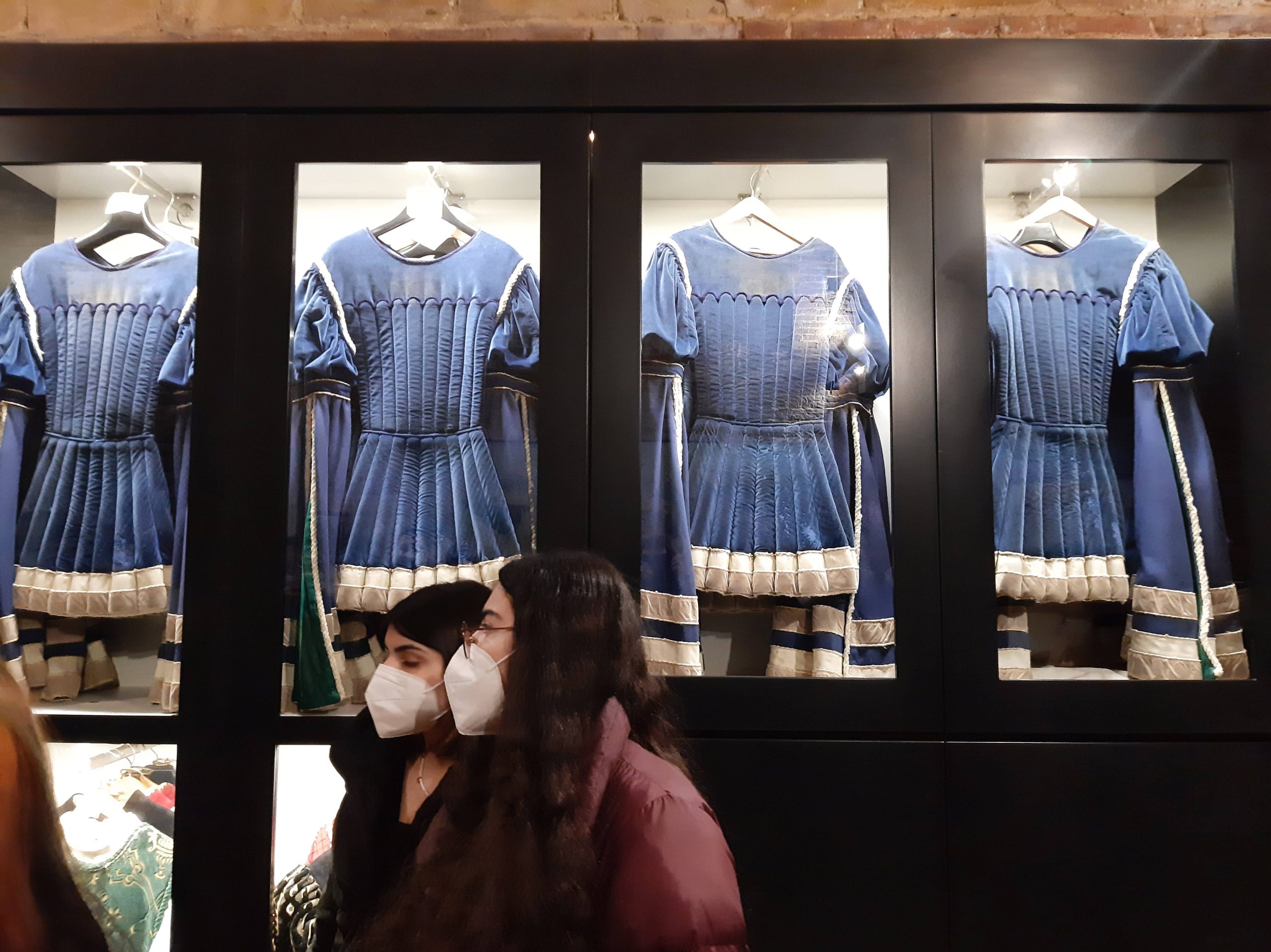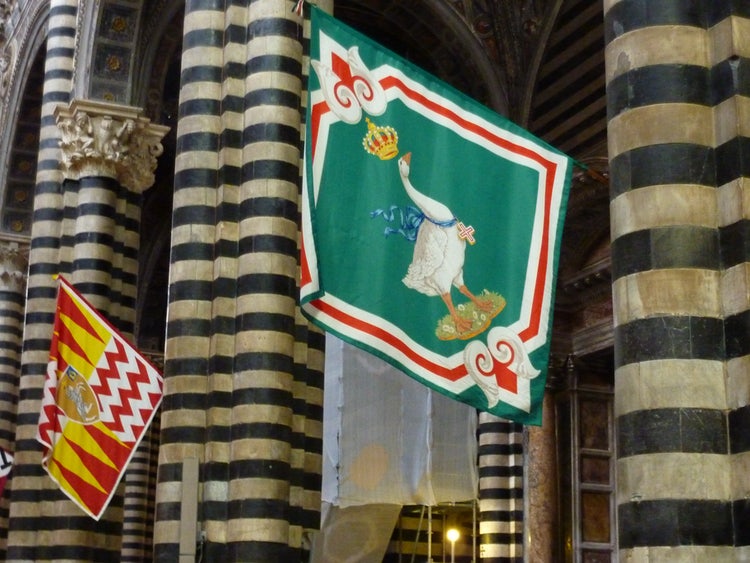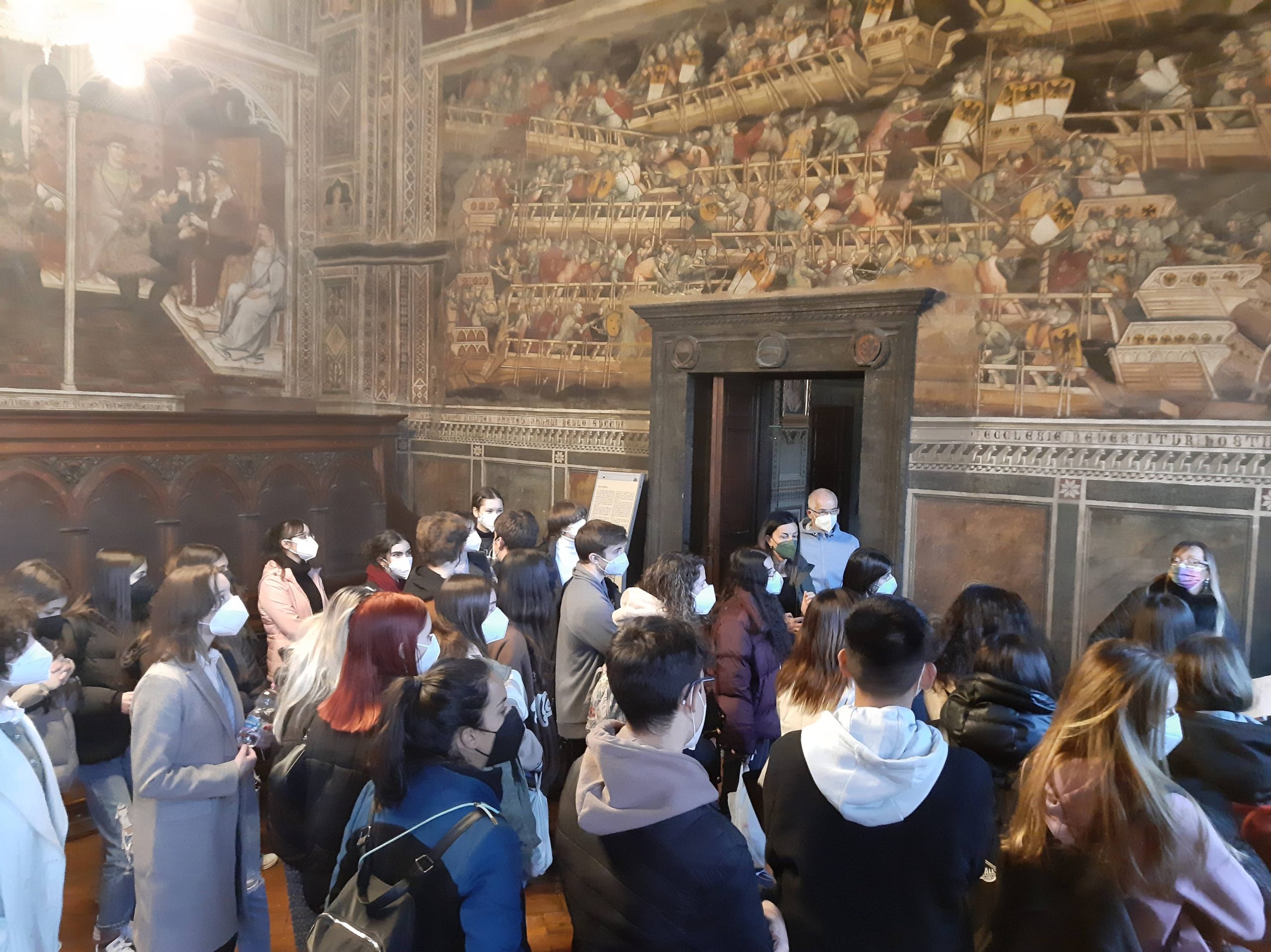Siena
…a diamond on the crown of Tuscany
siena, tuscany, italy
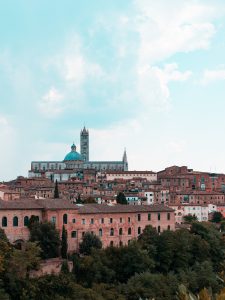
Siena is said to have been founded by Senius, son of Remus, one of the two legendary founders of Rome thus Siena’s emblem is the she-wolf who suckled Remus and Romulus – you’ll find many statues throughout the city. The city sits over three hills with its heart the huge piazza del Campo, where the Roman forum used to be. Rebuilt during the rule of the Council of Nine, a quasi-democratic group from 1287 to 1355, the nine sections of the fan-like brick pavement of the piazza represent the council and symbolizes the Madonna’s cloak which shelters Siena.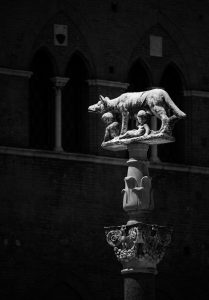
The city is historically linked to commercial and banking activities, having been a major banking center until the 13th and 14th centuries. Siena is also home to the oldest bank in the world, the Monte dei Paschi bank, which has been operating continuously since 1472. Several significant Renaissance painters worked and were born in Siena, among them Duccio, Ambrogio Lorenzetti, Simone Martini and Sassetta, and influenced the course of Italian and European art.
The University of Siena, originally called Studium Senese, was founded in 1240, making it one of the oldest universities in continuous operation in the world. Siena was one of the most important cities in medieval Europe, and its historic center is a UNESCO World Heritage Site.
Siena is famous for its cuisine, art, museums, medieval cityscape and the Palio, a horse race held twice a year in Piazza del Campo
Piazza del Campo in Siena
The Heart & Soul of the City
A universal symbol of the city, the distinct formation of the Piazza del Campo is just one of the reasons why UNESCO recognizes Siena as the ideal embodiment of a medieval city. Built in the exact place where the three antique hilltop towns sloped together, before eventually combining to create the community of Siena.
The main square, commonly called “il Campo” was built on the intersection of the three main roads that lead to and from Siena, destined to be a neutral ground where political and civic holidays could be celebrated. The homogenous architectural form of the square and the buildings facing it was not an accidental happening; the government created guidelines in 1297, before the actual building of the square and civic buildings. If any structure didn’t adhere, then they were torn down – as was the antique church for St. Peter and Paul. This signifies that it was always the city leader’s intention to create a harmonious structure between the buildings and the square.
 The square, with a circumference of 333 meters, is paved with a fishtail design of red brick divided by 10 lines of white travertine stone creating a shell like appearance with 9 sections pointing directly to Palazzo Pubblico, the civic headquarters. Each section represents one of the ruling 9 governors in the “governo dei nove” and is long considered to be one of the most stable and peaceful governments in Italy. Artistically speaking, the sections were to resemble the folds in the Virgin Mary’s cloak, who was not only the patron saint, but considered the “ultimate ruler” of Siena.
The square, with a circumference of 333 meters, is paved with a fishtail design of red brick divided by 10 lines of white travertine stone creating a shell like appearance with 9 sections pointing directly to Palazzo Pubblico, the civic headquarters. Each section represents one of the ruling 9 governors in the “governo dei nove” and is long considered to be one of the most stable and peaceful governments in Italy. Artistically speaking, the sections were to resemble the folds in the Virgin Mary’s cloak, who was not only the patron saint, but considered the “ultimate ruler” of Siena.
.
the palio
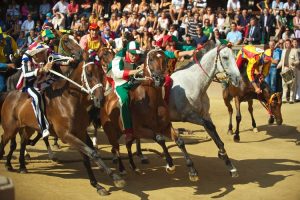
The Palio horse race takes place twice a year, one the 2nd of July (Palio of Provenzano, in honor of the Madonna of Provenzano) and on August 16th (Palio of the Assumption, in honor of the Virgin Mary’s Assumption).
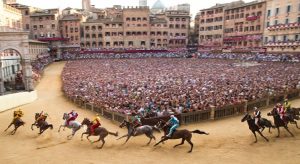 During this special occasion, the main square in Siena, the Piazza del Campo, is prepared for the race as the ring around the square is covered with tuff clay.
During this special occasion, the main square in Siena, the Piazza del Campo, is prepared for the race as the ring around the square is covered with tuff clay.
Ten out of the seventeen contrade take part in each race: seven are those that did not participate in the previous race on that day, while the other three are drawn by lots.
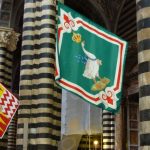 The Palio actually takes place over 4 days, the race taking place on the fourth day. The first day is for the “Tratta“, or the drawing of the lots and assignment of the horses to each of the Contrade. Therefore, each of the Contrade picks their jockey but not the horse; the horses are drawn and only known at this time, just 4 days before the race!
The Palio actually takes place over 4 days, the race taking place on the fourth day. The first day is for the “Tratta“, or the drawing of the lots and assignment of the horses to each of the Contrade. Therefore, each of the Contrade picks their jockey but not the horse; the horses are drawn and only known at this time, just 4 days before the race!
The Palio prize is called “Drappellone” or large drape, a large painted canvas each year designed and created by a different artist and which the winning contrada displays in their contrada museum.
monuments
Siena’s Cathedral
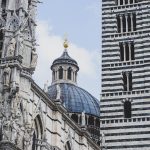 The Duomo in Siena lies in a piazza above the Piazza del Campo, a great Gothic building filled with treasures by Pisano, Donatello and Michelangelo as well as frescoes by Pinturicchio.
The Duomo in Siena lies in a piazza above the Piazza del Campo, a great Gothic building filled with treasures by Pisano, Donatello and Michelangelo as well as frescoes by Pinturicchio.
The exterior of the cathedral is pretty impressive, and if you don’t have a lot of time in Siena, you might not even go inside and just enjoy the outside. Built between 1215 and 1263 on the site of an earlier structure, the cathedral is in the form of a Latin cross with a slight projecting dome and bell tower. The exterior and interiors are decorated in white and greenish-black marble in alternating stripes, black and white being the symbolic colors of Siena.
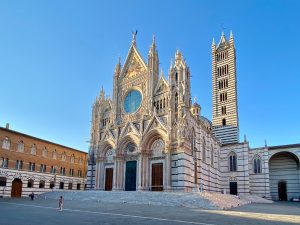
The Tower of Mangia
 Looming 102 meters over the Piazza del Campo, the elegant, sleek tower to the Palazzo Pubblico is the third tallest in all of Italy. Built from red brick, as a symbol of its affinity to the “commoner” the tower is 87 meters tall of brick and the remaining is a white travertine, most probably to make it visually more prominent. Siena was determined to give the church and the civic authority the same “power” and reverence, so when building the tower which would eventually become the Tower of Mangia and the cathedral bell tower, there were to be of the same height as the cathedral to show that they are equal powers
Looming 102 meters over the Piazza del Campo, the elegant, sleek tower to the Palazzo Pubblico is the third tallest in all of Italy. Built from red brick, as a symbol of its affinity to the “commoner” the tower is 87 meters tall of brick and the remaining is a white travertine, most probably to make it visually more prominent. Siena was determined to give the church and the civic authority the same “power” and reverence, so when building the tower which would eventually become the Tower of Mangia and the cathedral bell tower, there were to be of the same height as the cathedral to show that they are equal powers
Constructed between 1325 and 1348, the architectural design of the tower is attributed to Muccio and Francesco Di Rinaldo, brothers from Perugia. The summit of the tower, in white travertine – containing the bell, was designed by another architect, possibly Lippo Memmi, noted as the brother-in-law to Simone Martini who painted the Maestà which takes up the whole north wall of the Sala del Mappamondo or Sala del Consiglio in the Palazzo Pubblico.…
palazzo publico
 The Museo Civico, the city museum of Siena is situated at the heart of the city, in the first floor of the city hall known as Palazzo Pubblico in the main square of Piazza del Campo. Palazzo Pubblico is still used for its original function, for the municipal offices of Siena. The entrance on the right side leads to the offices and from the main entrance on the left side you enter into the courtyard called the Cortile del Podestà. From there, you find access to the city museum and to the tower, Torre del Mangia, from where you can admire a splendid view over the roofs of the city after climbing over 400 steps.
The Museo Civico, the city museum of Siena is situated at the heart of the city, in the first floor of the city hall known as Palazzo Pubblico in the main square of Piazza del Campo. Palazzo Pubblico is still used for its original function, for the municipal offices of Siena. The entrance on the right side leads to the offices and from the main entrance on the left side you enter into the courtyard called the Cortile del Podestà. From there, you find access to the city museum and to the tower, Torre del Mangia, from where you can admire a splendid view over the roofs of the city after climbing over 400 steps.
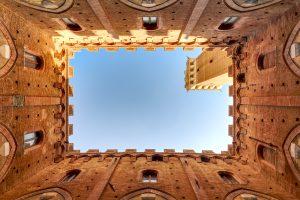 The Palazzo Pubblico was constructed between the last years of 13th century and the first decades of the 14th during the Government of the Nine, called Governo dei Nove, because of the nine representatives of the people elected from the middle class, they were not from the noble families. These nine men remained in office for two months in time and governed the city without external influence, as they never left city hall during the period they were in office. One of the most important rooms is, in fact, the Room of the Nine, the Sala dei Nove, where they received visitors, so the message of the pictures had to be clear.
The Palazzo Pubblico was constructed between the last years of 13th century and the first decades of the 14th during the Government of the Nine, called Governo dei Nove, because of the nine representatives of the people elected from the middle class, they were not from the noble families. These nine men remained in office for two months in time and governed the city without external influence, as they never left city hall during the period they were in office. One of the most important rooms is, in fact, the Room of the Nine, the Sala dei Nove, where they received visitors, so the message of the pictures had to be clear.
